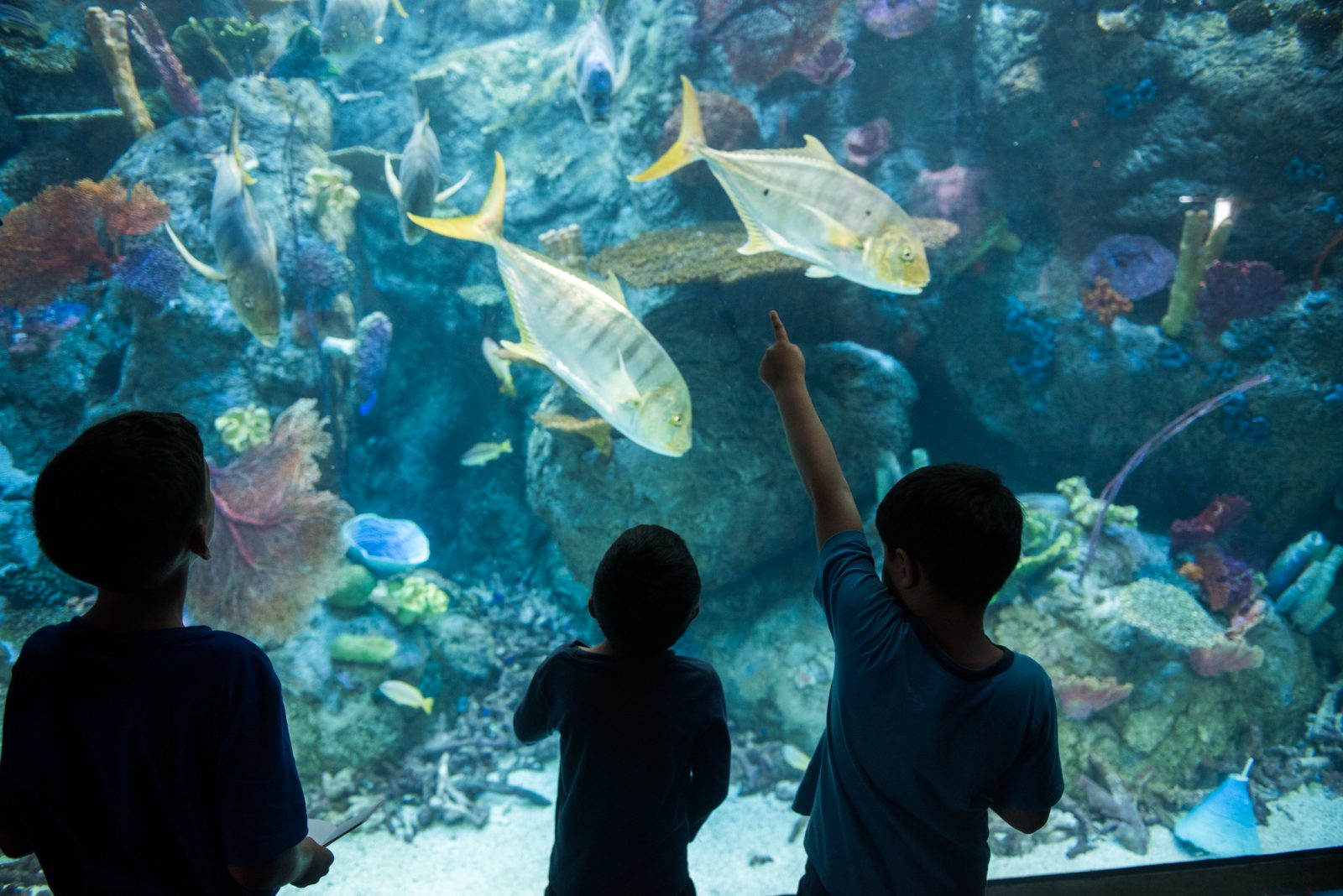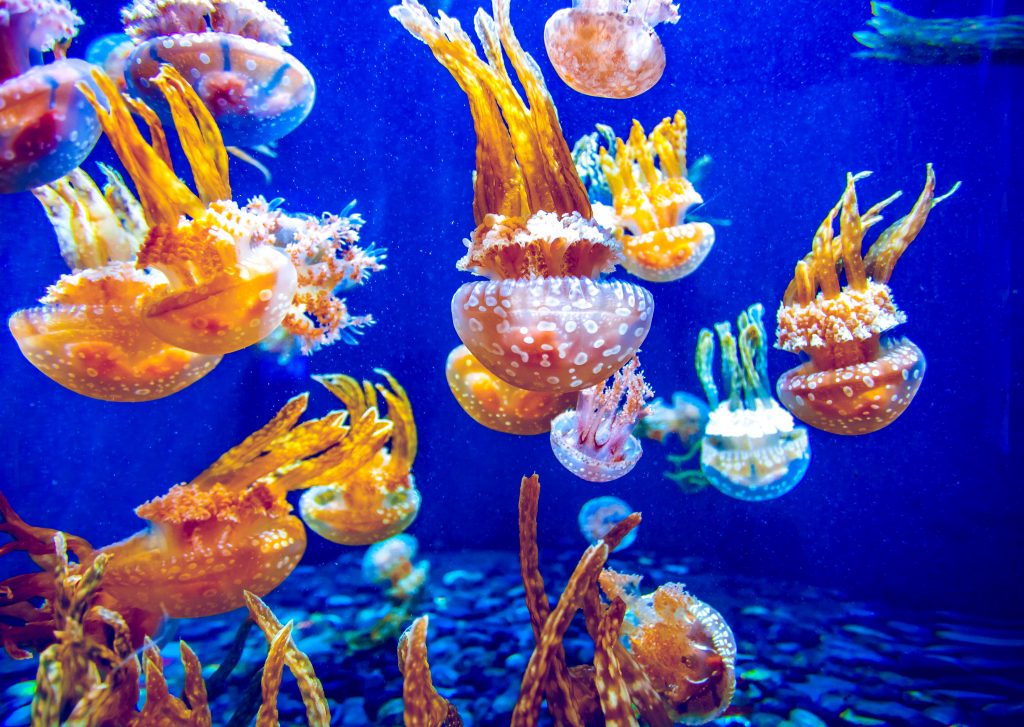Aquatic Elevation


When the city of Long Beach, Calif. sought to revitalize its harbor-front and downtown, civic leaders turned to the water in the form of a world-class ocean aquarium as a centerpiece of a long-term development plan. Now more than two decades later, the Aquarium of the Pacific is a popular attraction that, indeed, ushered in an era of civic reinvention.
By Eric Herman
Like many great American cities, Long Beach, Calif., has seen its share of economic mood swings. Combined with the adjacent Los Angeles Harbor (forming what is now known as World Port LA) the Port of Long Beach forms the largest man-made harbor in the world and the busiest container port in the Western Hemisphere.
Coupled with the discovery of large oil fields way back in the 1880s, Long Beach became a bustling harbor town enjoying vibrant economic activity throughout the first half of the 20th century. It was famous for its seaside amusement park, The Pike, the “Coney Island of the West, and became southern California’s terminal for the cruise- ship industry. It also became the permanent home of the Queen Mary and for many years was home to the Spruce Goose.
For all of that bustling activity, the city suffered severe social decline and by the early 1980s had become more known for high crime and urban decay. The area adjacent to the harbor had become no place to bring a family.
A NEW HOPE
That began to change in the late 1980s when civic leaders undertook a massive makeover, focusing on turning its waterfront areas into a major tourist destination with housing, retail, entertainment developments including the Long Beach Convention Center and associated hotels.
Billed as the largest waterfront development in California history, known as the Pike Project the effort featured the Aquarium of the Pacific as a centerpiece, opening its doors in 1998 to widespread public approval and immediate popularity. It was an instant success.
The Aquarium is impressive by any measure. The facility contains 50 marine exhibits housing more than 11,000 animals and over 500 species in displays ranging from 5,000 to 350,000 gallons. One of its most spectacular features is life size blue whale and calf that hangs over the lobby.
In 2019, the Aquarium of the Pacific drew more than 1.5 million visitors and is the fourth most visited aquarium in the U.S. It is the only aquarium in the world that focuses entirely on the Pacific Ocean.
UP FROM UNDER
The aquarium now anchors a vast complex of parkland, pedestrian trails, hotels, restaurants and retail stores, all organized around the harbor shores, and an updated version of The Pike. The adjacent downtown area followed suit with the construction of multiple hotels, promenades and office buildings.
The land where the Aquarium now sits did not exist prior to the 1950s. It’s located in an area that was offshore of the old Pike amusement park roller coaster, the Cyclone Racer. The new Pike is located just inland from the Aquarium and serves as a connection between the area’s past, present and future.
The aquarium’s architecture was a joint venture that included Hellmuth, Obata & Kassanbaum (HOK) and Esherick Homsey Dodge and Davis (EHDD) of San Francisco. EHDD designed the critically acclaimed Monterey Bay Aquarium and has collaborated on the plans for numerous marine exhibitions worldwide.
Today, the Aquarium of the Pacific’s mission is to “instill a sense of wonder, respect, and stewardship for the Pacific Ocean, its inhabitants, and ecosystems.”
Each exhibit and its inhabitants receive processed seawater through a massive filter system designed to keep the habitat environment clean and natural. Depending on the tank size exhibit and the species that inhabits it, the filtration systems turnover water process in 30 to 90 minutes. To ensure the exhibits are filled with the most pollution-free saltwater, approximately once a month, new seawater is replaced in each living exhibit.
BIG WAVES
Beyond its world-class animal exhibits, the Aquarium offers educational programs for all ages, including hands-on activities and lectures by leading marine scientists, researchers and advocates. Through these programs and various of multimedia experiences, the aquarium provides opportunities to plumb the depths of ocean science and, indeed, the entire planet.
It has been credited with redefining the modern aquarium experience, becoming a diverse gathering place where cultures of the world and the arts are celebrated and explored, and where crucial issues impacting our planet and its oceans are undertaken by scientists, policymakers, and stakeholders in the search for sustainable solutions.
Throughout each year, the Aquarium features an array of art exhibitions, performances, and cultural festivals to attract an equally diverse audience, all the while underscoring the connectedness of the human experience with the hidden complexity of marine environments.
In addition to its public programs and exhibits, the aquarium is involved in numerous conservation efforts, including sustainable seafood, watershed and drought education, and ocean literacy. It’s team of scientific divers collects critical data used by a variety of ocean research institutes and reporting agencies, and through its Aquatic Forums, in this way, the Aquarium brings scientists, educators, community leaders, and policymakers together in a dynamic working environment to develop solutions to complex and evermore crucial environmental issues.
EXPANDING CURRENTS
Additions to the Aquarium since its opening have included wetlands exhibit, Jellies: Phantoms of the Deep, Lorikeet Forest, a 5,200 sq. ft. walkthrough aviary where visitors interact with colorful and friendly birds from down under, Shark Lagoon, featuring more than 150 sharks you can touch and those you most certainly cannot, sea otters and a popular penguin habitat.
In 2019, the aquarium unveiled Pacific Visions its biggest expansion in its two-decade history. Also designed by EHDD, Pacific Visions is a 29,000-square-foot, two-story, sustainable structure. It houses a state-of-the-art immersive theater, an art gallery, and a culmination gallery with interactives, game tables, and live animal exhibits. Through Pacific Visions, visitors can explore the most pressing environmental issues of our time and alternative pathways to designing a more sustainable future.
Today Long Beach has regained its reputation as a family friendly tourist destination. It stands as a powerful example of how by working to save and celebrate the ocean, it is also possible to revitalize an entire city.
Opening photo by Wangkun Jia | Shutterstock. Jellyfish photo by Volodymyr Goinyk | Shutterstock

